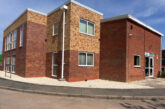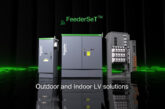
Jason Hallam from CPN-Cudis explains how you can protect your client and yourself from the associated risks of an unprotected system.
Switching events, such as starting up equipment from plant machinery or an electrical network, can all generate overvoltages within the building or externally. This could even be from a neighbouring building near your premises powering up arc welders, lift motors, refrigeration equipment and air conditioning systems. Even certain types of lighting systems can generate potentially damaging overvoltage conditions.
Atmospheric conditions can also cause serious problems. In the UK we have an average of 300,000 ground lightning strikes a year, the majority of them hitting open areas. However, some will hit buildings and overhead power lines. These potential harmful voltages can be induced into the building from a direct strike or from the secondary effects of lightning which can reach up to 6,000 volts.
A typical lightning bolt can contain up to one billion volts and between 10,000 to 200,000 amperes of current.
To prevent the various dangers presented by overvoltage the correct Surge protection devices need to be installed.
Surge Protection Devices
The greater the over voltage, the greater the risk of disruption, degradation and damage to the equipment connected to the electrical system. As technology moves on, components within electronic equipment continue to become smaller and therefore more sensitive to these types of influences.
Some technologies used in SPDs:
Metal Oxide Varistor (MOV) – An MOV is a bipolar,  non-linear resistor with a symmetrical voltage / current characteristic curve and a resistance value which decreases as the voltage increases. This is the most popular type of device, mainly due to its fast reaction times and relatively low cost production in comparison to other technologies.
non-linear resistor with a symmetrical voltage / current characteristic curve and a resistance value which decreases as the voltage increases. This is the most popular type of device, mainly due to its fast reaction times and relatively low cost production in comparison to other technologies.
Gas Discharge Tube (GDT) – A sealed gas filled spark gap consisting of two metal electrodes, which are normally spaced by a ceramic or glass insulator. Not as popular as MOV technology as they can be slightly slower in reaction time.
Silicone Avalanche Diode (SAD) – A semiconductor diode, which avalanches like a thyristor and folds back to give less dissipation. Fast in reaction times but expensive to produce and use.
Fitting SPDs
Fitting surge protection devices is very simple, providing they are designed into the installation. This is normally achieved by allowing for a spare way in the distribution board – either three-phase or single-phase and fitting it at the origin. The supply feeding the SPD is normally done via an over current protection device – for example a circuit breaker. The circuit breaker is predominantly there for means of isolation purposes, to allow for commissioning and testing. Isolating of the SPD is recommended when carrying out loop impedance and insulation resistance testing. The SPD that is fitted at the origin needs to be on a non-earth leakage protected circuit. It is also important to note the earthing arrangement e.g. (TNS TT etc.) before ordering SPDs.
It should also be noted that the SPD should be mounted as close as possible to the incoming terminals of the circuits being protected, with cables between protective MCBs kept as short as possible in order for the SPD to operate at its best performing clamping voltage.
Common types of SPDs
Type 1 Class 1 are fitted at the origin of a supply where the building has an LPS (Lightning Protection System) fitted, or has an overhead supply. This SPD will protect against damage caused by a direct lightning strike.
Type 2 Class 2 are fitted at the origin, if no LPS system or overhead supply is present, co-ordinated down stream of a Type 1 Class 1 in sub distribution boards.
Type 3 Class 3 are fitted next to sensitive equipment (e.g fire alarm panels, CCTV, sever rooms and PC work stations) or co-ordinated down stream of a Type 2 Class 2 if required.
BS7671 Section 443
If your installation falls under any of the categories: I, II or  III below, a risk assessment is not required as it will always result in that protection is needed.
III below, a risk assessment is not required as it will always result in that protection is needed.
I. Consequences related to human life (e.g. safety services or medical equipment in hospitals)
II. Consequences related to public services (e.g. loss of public services, information technology centres or museums)
III. Consequences to commercial or industry activity (e.g. hotels, banks, industries, commercial markets or farms)
The following levels of consequences (IV and V) are based on a risk assessment calculation set out in section 443 of BS7671.
IV. Consequences to groups of individuals (e.g. large residential buildings, churches, offices or schools)
V. Consequences to individuals (e.g. small or medium residential buildings or small offices)
A quick method for consequences IV and V is to determine if overvoltage protection should be provided prior to carrying out a risk assessment. Just ask yourself: “Does the building (or an adjacent building) have a lightning protection system fitted or have an overhead supply?”
If the answer to either of these is yes, then the answer would be simply yes; fit an SPD and protect your customer and yourself from the associated risks of an unprotected system. The risk assessment calculation listed is section 443 is a simplified method based on IEC 61662.
The benefits of fitting SPDs far outweigh the initial cost so why not offer to fit SPDs on all installations?








